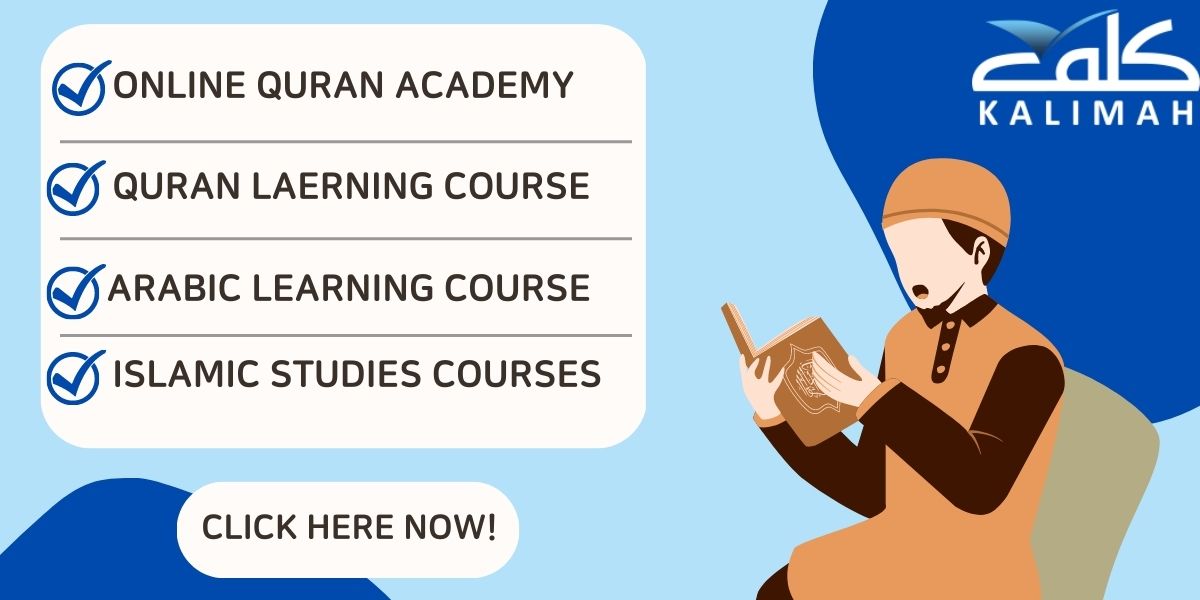In the rich tapestry of Arabic phonetics, tongue letters, full mouth letters, and nasal letters each play a vital role. Tongue letters, comprising 18 distinct sounds, emerge from various parts of the tongue—back, middle, side, and tip—shaping the essence of words.
Full mouth letters, known as Huroof Al-Tafkheem, add a bold, emphatic quality to the language, thickening the voice for letters like ق (Qaf) and غ (Ghain). Meanwhile, nasal letters, particularly ن (Noon) and م (Meem), resonate through the nasal cavity, creating the distinctive ‘ghunna’ sound.
Understanding the articulation points of Arabic letters is crucial, dedication to the mastery of each letter’s pronunciation and articulation ensures the true essence of the word is captured.
In simpler terms, the articulation point is the precise location from which the letter’s sound emerges. There are a total of 18 tongue letters in the Arabic language. Learning the articulation points is important in correctly pronouncing the makhraj of the letters.
What Are Tongue Letters In Arabic?
Tongue letters in Arabic refer to the sounds produced by different parts of the tongue, essential for accurate pronunciation and meaning.
There are 18 tongue letters, categorized by their points of articulation: the back of the tongue for ق (Qaf) and ك (Kaf), the middle for ش (Shin), ج (Jim), and ي (Ya), the side for ض (Dad) and ل (Lam), and the tip for letters like ن (Noon), ر (Ra), د (Dal), among others.
Proper pronunciation is crucial for clarity, preserving meaning, and appreciating Arabic literature and the Quran. The concept of ‘makhraj’ (مَخْرَج), meaning the point of articulation, is fundamental in learning these sounds.
Introduction of The points of articulation – Makharij
In Arabic, The point of articulation is termed ‘makhraj’ (مَخْرَج), with its plural being ‘makharij’ (مَخَارِج). The term stems from the Arabic root خَرجَ, translating to “he exited.”
The Arabic points of articulation or Makharijul Huruf are the positions from which the letter exits, in other words, the place where the sound comes from, the exit point linguistically, and basically, the point of articulation of the letter while pronouncing it and differentiating it from other letters.
We can pronounce the letter as a consonant to determine the letter’s point of articulation, or we can just pronounce it strengthened after a Hamza (ء) with Fatha, Kasra, or Dammah and determine the letter’s point of articulation by noticing the place where the sound cutoff occurs.
And this method is the simplest way to determine the letters’ points of articulation without having to study them in depth.
What Are The Parts Of Tongue In Arabic?
The tongue has various positions within the mouth that are used to pronounce different letters, as follows:
1. The Furthest Back Part of the Tongue
The furthest back part of the tongue has two letters, the letters from this makhraj: ق (Qaf) and ك (Kaf).
Pronunciation: When pronouncing ق, the extreme back of the tongue touches the upper palate, creating a thick sound in the tonsils area.
For ك, the tongue does not meet the upper palate, except as necessary for pronunciation, resulting in a sound produced from the back of the tongue without elevation.
2. The Middle of the Tongue
The middle part of the tongue is used for three letters.
Letters from this makhraj: ش (Shin), ج (Jim), and ي (Ya).
Pronunciation: These letters are pronounced when the middle part of the tongue contacts the roof of the mouth opposite to it.
3. The Side of the Tongue
The side of the tongue has two specific points of articulation.
Letters from this makhraj: ض (Dad) and ل (Lam).
Pronunciation: For the letter ض, the rear side of the tongue touches the upper back teeth from either the right side, the left side, or both. The left side of the tongue is commonly used.
The letter ل is articulated by the side of the tongue nearest the front of the mouth and the tip of the tongue touching specific areas of the gums and teeth.
4. The Tip of the Tongue
The tip of the tongue has five articulation points for eleven letters.
Letters from this makhraj:
ن (Noon), ر (Ra), د (Dal), ط (Taa), ت (Ta), ص (Sad), س (Seen), ز (Zaay), ظ (Za), ذ (Dhal), ث (Tha)
Pronunciation: Each letter has a specific point of contact with the tip of the tongue and the opposing gums or teeth. The sounds produced vary based on these contact points.
Read more about Throat Letters in Arabic

Full Mouth Letters In Arabic
There are seven full mouth letters in Arabic, which require a full mouth and emphatic pronunciation.
These letters are commonly known as bold or heavy letters. In Arabic, these seven letters are called Huroof Al-Tafkheem.
1. Full Mouth:
It is the thickening of the voice and closing of the mouth when any of the letters are pronounced.
Full Mouth letters: خ , ص , ض , ط , ظ , غ , ق
They are collected in the phrase:
خُصَّ – ضَغْطٍ – قِظْ
2. Empty Mouth:
It is emptiness in the voice and openness of the mouth when any of the letters are pronounced.
Empty Mouth letters: The rest of the letters after taking out the full mouth letters and Alif (أ), Laam (ل) and Raa (ر) (as they are full mouth and empty mouth and they have their own set of rules).
Nose Letters In Arabic
The nasal cavity plays a role in producing what’s known as the nasal resonance or ghunna (الغُنّة)and this characteristic sound is particularly evident when pronouncing the letters noon ن and meem م when they have a shadda (ّ) over them.
The ghunna is also present when the noon ن, meem م, or tanween is in a state of sukoon, but this occurs under specific conditions.
When the sound of these two letters goes in the nose we call it ghunna. Did you notice م is pronounced from the lips but the sound also goes into the nose, try saying mmmmmmm.
Read more about the Characteristics of Arabic letters
The Importance of Learning Arabic Letters (Makhaarij Al-Huroof)
It is the first simple educational process that the student encounters when studying the Arabic language.
It is a process, although it is easy in its essence, but it is of great importance, especially for children, as it is the building unit of the first language and the first oral expression of the language in general.
The interest of the student or teacher in the pronunciation of sounds is not a matter of linguistic luxury, but rather it is one of the foundations of learning the Arabic language.
We cannot describe a person as being proficient in the Arabic language, especially non-native speakers, unless this person has mastered the correct pronunciation of Arabic sounds in all cases.
Learning the pronunciation of sounds is the cornerstone of learning languages in general and the Arabic language in particular.
1. Clarity of Speech:
Proper pronunciation enhances the clarity of speech enabling effective communication.
Mastery of Makhaarij Al-Huroof ensures that each letter is pronounced correctly eliminating potential misunderstandings and misinterpretations in both spoken and written Arabic.
2. Preservation of Meaning:
Arabic words often have subtle differences in meaning based on the pronunciation of specific letters.
Mispronunciation can lead to altered meanings and distort the intended message.
Understanding Makhaarij Al-Huroof enables learners to preserve the nuances of Arabic vocabulary.
3. Appreciation of Arabic Poetry and Literature:
Arabic literature, particularly poetry, relies heavily on the beauty of its language and pronunciation.
Accurate pronunciation allows readers and listeners to fully appreciate the intricate rhyme schemes, alliterations and meter of Arabic poetry.
Makhaarij Al-Huroof provides the foundation for appreciating and analyzing the literary aspects of Arabic texts.
4. Connection to Quran:
The Quran, the holy book of Islam is written in Arabic and proper pronunciation is of utmost importance when reciting or studying the Quran as it ensures reverence and respect for the sacred text.
Makhaarij Al-Huroof facilitates a deeper understanding of the Quranic verses and fosters a stronger connection to the religious traditions associated with Arabic language and literature.
Read more about Soft And Leen Letters in Arabic
How to learn Arabic Letters (Makharij al-Huruf)?
To learn Makharij al-Huruf, you need to leverage resources like structured courses and visual aids.
Beginners can effectively learn and master Makharij al-Huruf, paving the way for Pronunciation of the Arabic language correctly as well as beautiful and accurate Quranic recitation.
Discover Our Range of Courses:
1. Learn Arabic Online
Get Started to Improve your Arabic Language & Linguistic Skills! If you wish to fluently and confidently speak Arabic, you’ve landed in the right place.
All our courses are presented in unique attractive presentations and supported by interactive materials to boost the learning experience.
2. Learn Quran & Tajweed online
Do you wish to get closer to the Quran, understand Allah’s revelation, and perfectly recite it like a native? It’s not hard or far away anymore!
In Kalimah Centre, we offer you a complete Quran Course to master the Quran recitation and learn the Tajweed rules by heart.
Our course is offered by Ijazah-certified teachers who have a long experience in teaching the Quran to non-Arabic speakers.
3. Learn Arabic Online For Kids
Do you wish your kids could learn Arabic and effectively understand it? Arabic learning has become essentially important nowadays for Muslim kids in the West.
It preserves their identity, culture, and most importantly; their faith!
Here comes the opportunity to effectively and simply teach your children the Arabic language at Kalimah Centre!
Kalimah Centre provides science-based, interactive, and child-friendly Arabic classes for children all over the world with our highly experienced native tutors!
4. Kalimah Intensive Group Classes
Join our online group classes for achieving better results in a shorter time. Learn from Kalimah most experienced teachers with our latest books, alongside a friendly group of Muslim brothers with cheap prices.
Don’t Miss Out on Your Chance to stand out, whether you’re a beginner or seeking advanced knowledge.
Unlock Your Potential in Arabic and Quran with Kalimah Center!
Ready to deepen your connection with the Quran and enhance your understanding of Arabic? Join Kalimah Center today and embark on a transformative journey of learning and growth! Our professional, handpicked Online Arabic and Quran Tutors are dedicated to helping you master these essential skills with ease and expertise.
📚 Explore Our Courses:
Online Arabic Course: Tailored to your level, our comprehensive Arabic program includes 16 teaching levels and 400+ hours of personalized sessions.
Online Quran With Tajweed Course: Perfect for non-Arabic speakers, our course spans 13 levels and equips you with Tajweed mastery from beginner to advanced.
Online Arabic Course For Kids: Nurture your child’s love for Arabic with our engaging and structured program, available in 24 levels for primary, intermediate, and secondary stages.
🚀 Start Your Free Trial Today! 🚀
Don’t miss out on this life-changing opportunity to deepen your faith and knowledge. Sign up now for your free trial and take the first step towards becoming a better practicing Muslim with Kalimah Center!
Conclusion
Mastering the pronunciation of the Arabic alphabet is fundamental for understanding and speaking the language fluently.
The distinct sounds and articulations of each letter, along with their phonetic characteristics, require focused learning and practice.
Resources like online courses can aid learners in grasping the intricacies of Arabic pronunciation.
By understanding the makharij al huroof and embracing the diversity of Arabic sounds, learners can navigate the complexities of the language with confidence and precision.
Makharijul Huruf, or the Points of Articulation of the Arabic Letters, is also a fundamental aspect of Tajweed, essential for clear and accurate Quranic recitation.
This study refines pronunciation by identifying specific locations in the mouth from which each letter is produced.
With roots in both linguistic and technical definitions, Makharijul Huruf ensures adherence to Allah’s command for measured Quranic recitation.
By mastering these articulation points, learners prevent mispronunciations, contribute to clear recitation, and fulfill the divine directive to recite the Quran with precision and reverence.
Categorized into five main groups, Makharijul Huruf includes the tongue, lips, nasal cavity, oral cavity, and throat.














